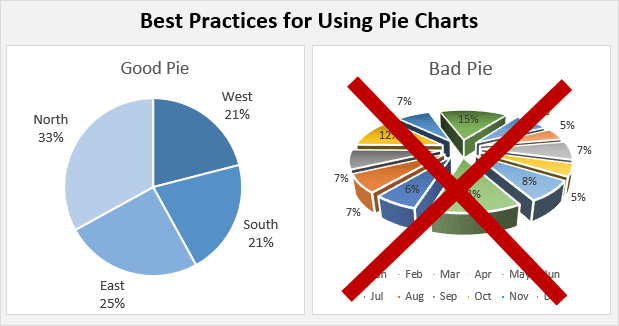Lab report writing help is more than simply summarizing results—it must be a structured analysis of your entire experiment. If you need guidance with your report, start by answering these questions:
- What did you do in the experiment?
- What did you observe?
- What does it all mean?
- Why does it matter in the broader context?
If you’re seeking external lab report writing help, you’re not alone. Students in engineering and science disciplines often face this issue: how to prepare their lab reports effectively.
That’s why our custom writing specialists created this article. Here, you’ll get a complete lab report writing guide, with expert tips, formatting advice, annotated examples, and everything else necessary to learn how to write the report without stress.
1. 🔖 Lab Report Format
Let’s begin with getting to know the most critical parts of the paper you should include.
- Abstract. After mentioning a title, of course, you should take care of an abstract. Basically, it’s a quick overview of the content.
- Introduction. Apart from introducing the topic or the problem of the experiment, it needs to give some background. Don’t forget that the objectives should be presented clearly.
- Methods. Here, you write about all the materials and equipment you used, as well as the process of collecting data, in case you were doing it.
- Results and analysis. It’s better to show the results of the experiment using graphics or tables. You should describe the analysis process, as well.
- Discussion. In this section, you would need to compare the key findings to the aims you stated at the beginning. If you mention any limitations, you can briefly discuss the best ways to overcome them.
- Conclusion. In conclusion, you need to restate your main objectives, sum up the findings, and highlight the experiment’s significance by identifying the implications.
- References. Don’t forget to mention all the sources you were using while writing this report. They should be placed in this section with all the publication details. Check out your writing requirements to find out which referencing style to use.
- Appendices. Here, you put all the additional information that is too detailed to include in the lab report’s main body.
2. 📃 How to Write a Lab Report Title Page
Four main pieces of information must be present on the title page:
- The report title
- The name of the author and the company or university that originated the report
- The name of the instructor
- Report completion date
A title page might also include a contact number, a security classification, or a copy number, depending on the nature of the report you are writing. Make your titles informative, straightforward, and moderately short.
Useful Tip:
Learn specific requirements from your tutor
3. 📓 How to Write a Lab Report Abstract
First thing first, a lab report abstract should be written last. There is no point in trying to guess what will be in your paper before you actually write it! And since this part is basically an overview of your experiment, it should also contain the essential findings and conclusions.
Another thing to remember is that the abstract needs to be brief! So try not to include any irrelevant information. Just stick to the main points. Also, make it as straightforward and coherent as possible since some readers might not be familiar with your research. They should be able to get the idea without reading the whole report first.
Useful Tip:
Write your abstract when the whole text is ready. The abstract should summarize the report’s content.
Example of a Lab Report Abstract
As you can see from the example below, the abstract resembles the general format of the report. Note which main parts are included.
Example:
Main objectives:
In this experiment, chromatography was used to analyze amino acids in solution. Standards were used to classify unknown amino acids in a mixture.
Methods:
Ascending layer chromatography with an isopropanol-based solvent was used to segregate the amino acids, which were then detected with ninhydrin.
Results:
The new mixture investigated was found to hold aspartate and histidine. It was observed that hydrophobic amino acids were the most mobile.
Discussion:
This method was shown to be an efficient way of examining unknown mixtures of amino acids.
Conclusion:
Based on this experiment’s observations, a mechanism for ninhydrin binding to amino acids is proposed.
4. 🚦 How to Write a Lab Report Introduction
In the introduction, you need to start with some background that you think would be useful for the reader. For instance, describe the latest research and theories in the field of your experiment. If there are any equations or laws that also seem relevant, include them as well.
And again, clearly state your aims and objectives in the form of a thesis statement.
Also, try not to confuse the tenses while writing the lab report. If you have already finished the experiment, mention it in the past tense. However, all the theories and equipment that still exist need to be addressed in the present tense.
Useful Tip:
Before describing the purpose of the report, make sure you understand it clearly. If you don’t, your reader won’t either.
Example of a Lab Report Introduction
In the following example, you can find all the parts pointed out with the description of their role.
Example:
Context:
The use of solar water heaters is quickly rising in both homes and institutions, as these heaters produce an environmentally friendly and cost-effective source of energy (Tian and Castillo 2016). However, a notable improvement to heating efficiency is needed before solar water heaters can be used without an additional energy source.
Theory:
Various circumstances in the design of the water heater affect how well solar energy is converted into heat energy and how effectively the heat is then transferred to the water.
Aim:
This experiment examined two factors influencing solar water heaters’ heating efficiency: mass flow rate and collector design. The efficiency of a flat-plate collector was measured, and the effects of various methods of welding water tubes on the absorber plate were opposed.
5. 🔬 How to Write a Lab Report Methods Section
It is the place where you finally get to explain what you did during the experiment. No matter what the plan was, you should describe how it actually went. Usually, the procedure would include the following details:
- A comment about how you set up the equipment (perhaps add a diagram);
- A record of all the materials you got to use;
- A detailed description of what you did to collect the data;
- And a few words about complications you faced and how they resolved.
If something may have caused an error in the results, don’t forget to mention it here!
Useful Tip:
Your methods section can be a simple list. It is important to make sure that it is complete and accurate.
6. 📊 How to Write a Lab Report Results Section
It’s true that in the lab report results section, there are loads of figures and tables. However, you should always remember to interpret all the findings in the verbal form! Moreover, some fundamental analyses, such as calculations and error analysis, may be presented here. You should still stick to the relevant information and drop the extra stuff like raw data in the appendix.
Then, when you introduce a graph, try to highlight the results in a couple of sentences so that the reader knows what to focus on when looking at it. Besides, there are a few rules to remember if you want your graphs to be a success.
First of all, they need to be easy to read and well-labeled. Even when you deal with a relatively complicated topic, try to make it at least look simple. So don’t add any unnecessary stuff like decorations or 3D effects. Moreover, never exaggerate or distort the data! It’s essential that your graphs reflect the truth correctly. Sometimes, it may happen by accident. In that case, ask some experts in the field to double-check their quality. Also, try not to overuse graphs! There is no need to insert one if there is only a small amount of data to display.

Useful Tip:
Use a graph-making tool to make your data look beautiful. There are a lot of free tools on the web, like Adobe Spark or Canva.
7. 👨🎓️ How to Write a Lab Report Discussion Section
Some people say that this part of the lab report is the most important because it shows what you have taken from the experiment beyond the results. Here, you would need to try and interpret your findings from your perspective. Highlight the significance, or maybe, discuss the problems that occurred and explain them. Here are some strategies that might help you.
- Compare your expectations and results;
- Analyze the error;
- Address the findings from the theoretical perspective;
- Make a connection between the results and the initial objectives;
- Compare and contrast your work with similar experiments;
- Talk about the limitations and strengths of your strategy.
Useful Tip:
Take the time to write your discussion section. Interpreting the results of your experiment is the most important part of your lab report.
8. 🏁 How to Write a Lab Report Conclusion
The conclusion is the last part of your report writing. Sum up the main points and refer to any underlying theme. If any questions or issues remain unresolved, mention them here. Write in a brief, concise manner because your readers are already familiar with your points.
Before writing your conclusion, make a draft. Go over your report and underline all the vital information to be repeated. Your conclusion has to stress the importance of the research.
Useful Tip:
Don’t introduce any new information in your conclusion. All you need to do here is to summarize the ideas from your report.
9. 🖇️ How to Write Lab Report References
Since it’s a report, you have most likely used some literature while working on a theoretical part of it. Therefore, the need to list all the sources arises. Not only do you have to take care of the proper in-text citations, but also you need to correctly organize the reference section at the end of the paper.
However, it doesn’t mean you have to struggle with it! As soon as you find out which referencing style you are required to use, go to our guides, and follow the detailed instructions. Just like that, your paper is ready with no hassle at all!
Useful Tip:
To keep track of numerous sources, begin writing them down at the very beginning of working on your report.
10. 📈 How to Write Lab Report Appendices
Your appendices should include data tables, background calculations, specification lists for equipment used, details of experimental configuration, and any other information that doesn’t quite fit in the main body.
Put each item into a separate appendix.
Useful Tip:
You need to refer to each of your appendices at least once. Don’t forget to check that!
Good luck with your report writing, and be sure to check out our blog for other writing tips and ideas for your next assignments!
11. 👀 Lab Report Example
Below you’ll find a downloadable example of a lab report. You can also check out Nature Journal Report Sample (MLA.)
12. ✍️ Lab Report Topics
- Lab report: particle aggregation.
- Research the ways to improve the corrosion protection of magnesium.
- Examine the methods to improve strawberry crop production.
- Analyze and write a report on the specific gravity of different objects and liquids.
- Lab report on enzyme immunoassay performance.
- Laboratory report: osmosis egg.
- Examine and compare the performance of different surfactants.
- Analyze and compare the bolted and welded connection in tension failure mode.
- Conduct an experiment on photovoltaics investigating how parameters changes can affect industrial processing units.
- Examine the connection between the weight of an object and the coefficients of static and kinetic friction.
- The role of flame test and chemical fingerprinting analysis for the determination of a metal ion present in an ionic compound.
- Write a lab report on bacteria reaction towards antibiotics experiment.
- Study how the enzyme amylase activity on starch depends on the pH level.
- Conduct a Langendorff experiment to determine the heart’s reaction to adrenaline and acetylcholine.
- Research the quality and safety of Fiji bottled water samples.
- Lab report: the problem of biodiversity.
- Examine heat transfer rates in a hot jet and determine whether the heat rates will differ in different areas.
- Analyze the yogurt fermentation process and compare the level of titratable acidity for yogurt and milk.
- Series and parallel circuit: laboratory report.
- Explore the safety of GMO use in food production.
- Conduct an experiment on air pressure and write a corresponding lab report.
- Research the methods to determine the presence of Enterobacter cloacae in the substrate.
- Quantitative real-time polymerase chain reaction: lab report.
- Analyze the physical and chemical properties of alkanes and their use in everyday life.
- Examine the reasons for Monilinia Fructicola’s resistance to fungicides.
- Explore the potential risks of acute respiratory failure.
- Study the accuracy of data obtained using a variety of techniques to determine the percentage of fat tissue in the human body.
- Conduct an experiment to illustrate how Kirchhoff’s rules work.
- Write a lab report on the properties of the enzyme lactase on the digestion of lactose.
- Research the melting point of different substances to determine an unknown substance.
- Write a lab report on the determination of DNA properties and viscosity.
- Laboratory report on the synthesis of nickel (II) complexes.
- Analyze the different bacteria stains on enriched, selective, and differential media.
- Explore the impact of water temperature on beetroot cell membrane permeability.
- Conduct an experiment and write a report on high temperature effect on the milk.
- Experiment on Newton’s law of cooling: lab report.
- Examine enzymes and their effect on cell chemical reactions.
- Research the role of diffusion in water absorption by plants.
- Study the causes and effects of cellular respiration.
- Analyze the factors that influence dye absorption.
- The structure of fibrinogens and their importance for the human body.
- Explore the use of the hyacinth plant for removing calcium metal from water.
- Lab report on DNA fingerprinting.
- Write a lab report on the examination and evaluation of the sampling method.
- Analyze the efficacy of a material identification by the coefficient of thermal expansion.
- Conduct an experiment illustrating the differences between osmosis, diffusion, and active transport.
- Determine the factors that influence protein separation.
- Explore the methods of increasing and reducing friction.
- Report on water quality and contamination experiment.
- Explain the effect of polycyclic aromatic hydrocarbons on the environment.
🔗 References
- Writing a Science lab report – Research & Learning Online
- The Lab Report | Writing Advice (University of Toronto)
- How to Write a Lab Report – Steps and Template – ThoughtCo
- Sample Lab Report (Baylor University)
- Scientific Reports – UNC Writing Center
- Laboratory Report (Duke)
- Parts of a lab report – Chemistry Lab Resources, Purdue
- Tips on Writing Lab Reports, UCLA
- Lab Report | University of Michigan – Michigan Health Lab
- Laboratory reports and lab books – The University of Nottingham





![Ultimate Report Writing Tips for Students: Best Ideas [Free]](https://custom-writing.org/blog/wp-content/uploads/2021/01/business-desk-with-keyboard-report-graph-284x153.jpg)





![Library Research Paper: Example & Writing Guide [2025]](https://custom-writing.org/blog/wp-content/uploads/2021/01/library-with-books-284x122.jpeg)
It’s actually a nice and helpful piece of information. I am happy that you just shared this helpful info with us. Please stay us up to date like this. Thanks for sharing.
As a site possessor, I believe the content material here is fantastic, appreciate it for your hard work. You should keep it up forever! Best of luck.
Generally, I don’t learn from posts on blogs, but I would like to say that this write-up very compelled me to try and do so! Your writing taste has been surprised me. Thanks, very great article.
Nice article. Thanks.
I’ve recently started a blog. The info you offer on this website has helped me tremendously. Thank you for all of your time and work.
Thank you, Mariano! Good luck on your new blog 🙂
Whoah, this blog is magnificent. I like reading your articles. Stay up the good work! You know, many individuals are hunting around for this info, you could aid them greatly.
I was recommended this website by way of my cousin. I am not certain whether this post is written via him as no one else know such detailed approximately my problem. You’re wonderful! Thank you!
I really like and appreciate your blog article. Really thank you! Much obliged.